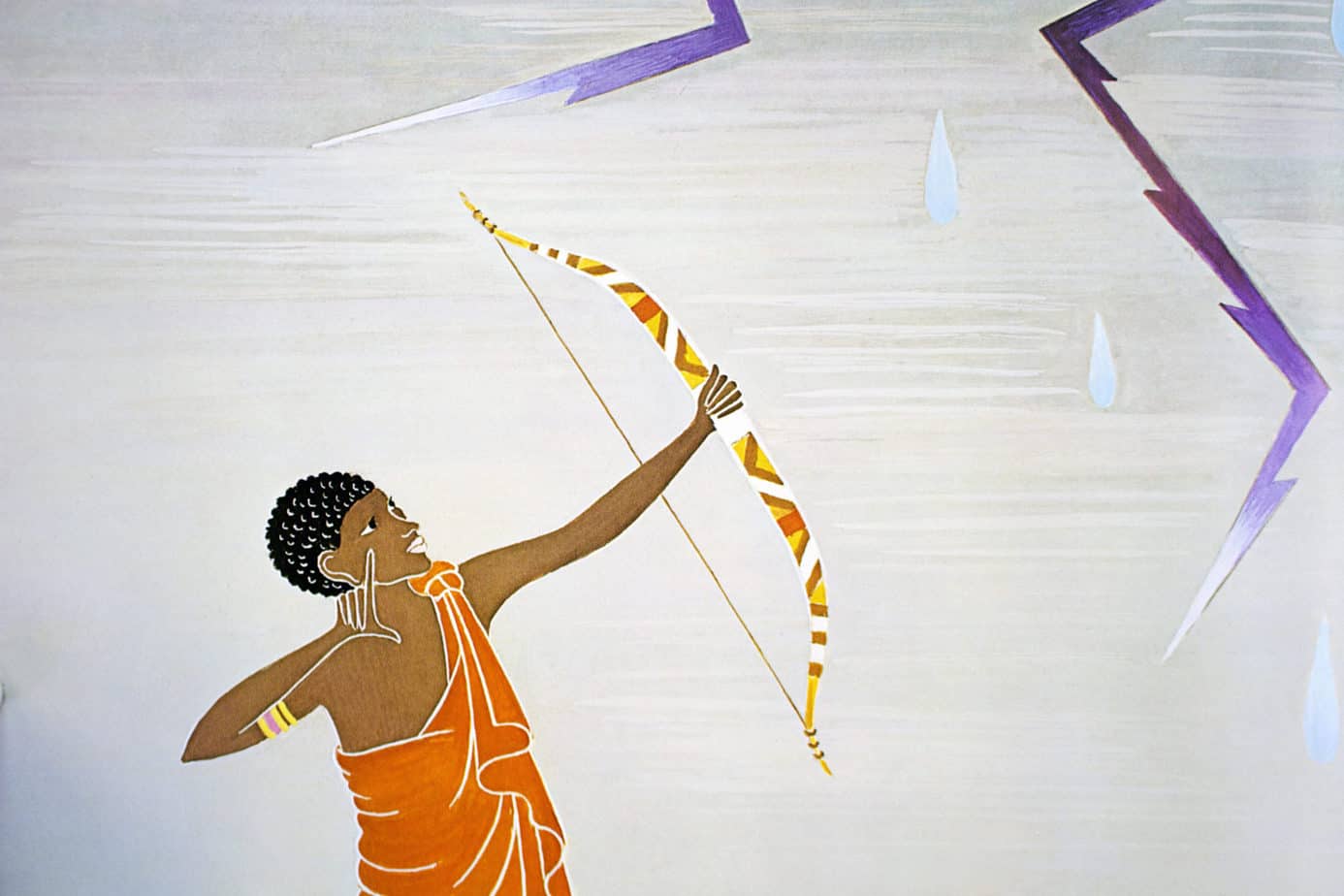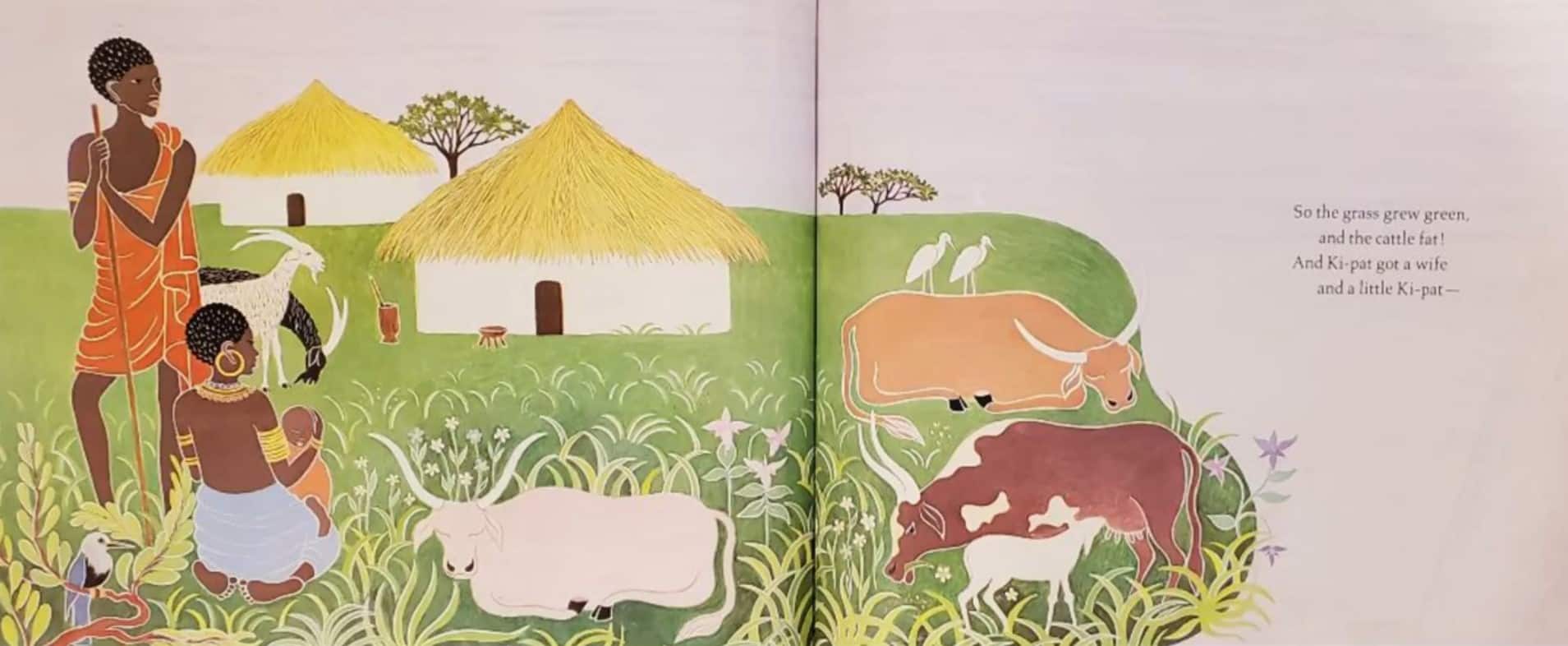Bringing the Rain to Kapiti Plain (1981) is a cumulative picture book written by Verna Aardema and illustrated by and Beatriz Vidal. The rhyming scheme borrows from the well-known childhood rhyme, “This is the house that Jack built“.
Vidal’s illustrations have a folktale vibe about them, partly due to those nice white outlines reminiscent of a woodcut.
I don’t know how Kapiti is meant to be pronounced — semi-arid lands in Kenya with a 550mm average rainfall — but my pronunciation is influenced by the name of the south-western North Island of New Zealand, called Kapiti Coast, in which the first syllable is stressed.
This picture book is subtitled “A Nandi Tale”.
Here is a PDF of a book written by a white person about the Nandi people in 1909, so you can guess what to expect, but it does include a collection of Nandi folktales. On page 123, I was interested to find a Nandi equivalent of “The House That Jack Built” cumulative tales, because this style of story can be found all over the world. However, it’s not this one. It’s a story about an old woman and her pig. This rhyme is clearly meant to be shared between two or more people, each taking a part. That is the joy of cumulative tales.

STORY STRUCTURE OF BRINGING THE RAIN TO KAPITI PLAIN
PARATEXT
A cumulative rhyme relating how Ki-pat brought rain to the drought-stricken Kapiti Plain. Verna Aardema has brought the original story closer to the English nursery rhyme by putting in a cumulative refrain and giving the tale the rhythm of “The House That Jack Built.”
MARKETING COPY
Why the cumulative story structure? These can be tedious to read for tired parents, especially if you’re reading at bedtime; in my experience I start yawning uncontrollably. However, a cumulative tale that builds on itself is a good narrative choice for an environmental story, because cumulative tales emphasise connections between things.
This particular story is mythic rather than scientific. But still.
SHORTCOMING
Focusing on the main character, Kipat, his big problem is that a drought affects Kapiti Plain, and his cows can’t get enough to eat and drink.
DESIRE
There are big rain clouds in the sky. Kipat wants the clouds to release the rain!
OPPONENT
Nature
PLAN
When a bird drops its feather, Kipat makes a bow and arrow

THE BIG STRUGGLE
Kipat shoots the arrow at the cloud. Then the cloud releases the rain.
ANAGNORISIS
Kipat has worked out how to make it rain. Honestly, I kind of wish this is how it worked.
NEW SITUATION
Like many old tales about young men who solve a problem and become successful, Kipat is rewarded with a wife. Woman as chattel, treated as about as important as the cows.


EXTRAPOLATED ENDING
Well, I’m guessing there will be another drought in Kipat’s lifetime. At some point he’s going to learn that him shooting that arrow into the sky was coincidental rather than causal. Until then, I’m sure he’s properly full of himself.
RESONANCE
Rain (too much and too little) is a growing problem as the climate changes.
When humans attempt to control where and when it rains, this is known as cloud seeding. Listen to “The Seeded Cloud” episode of The Curious Cases of Rutherford and Fry to get an overview of efforts that have been made so far (not very successfully) and problems that will arise if some scientists do work out how to seed clouds really well.

